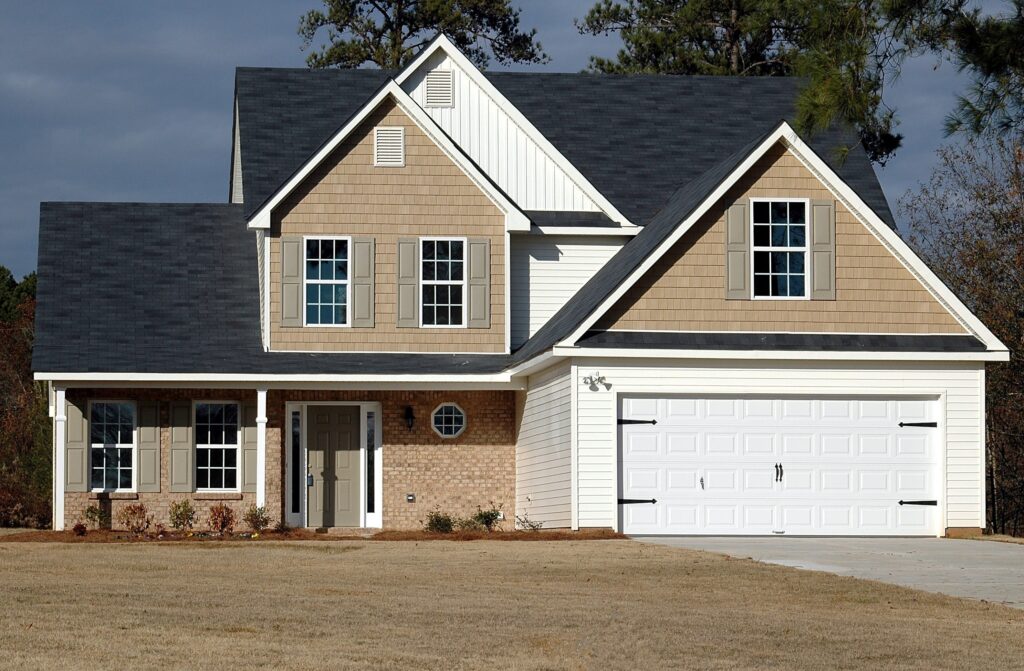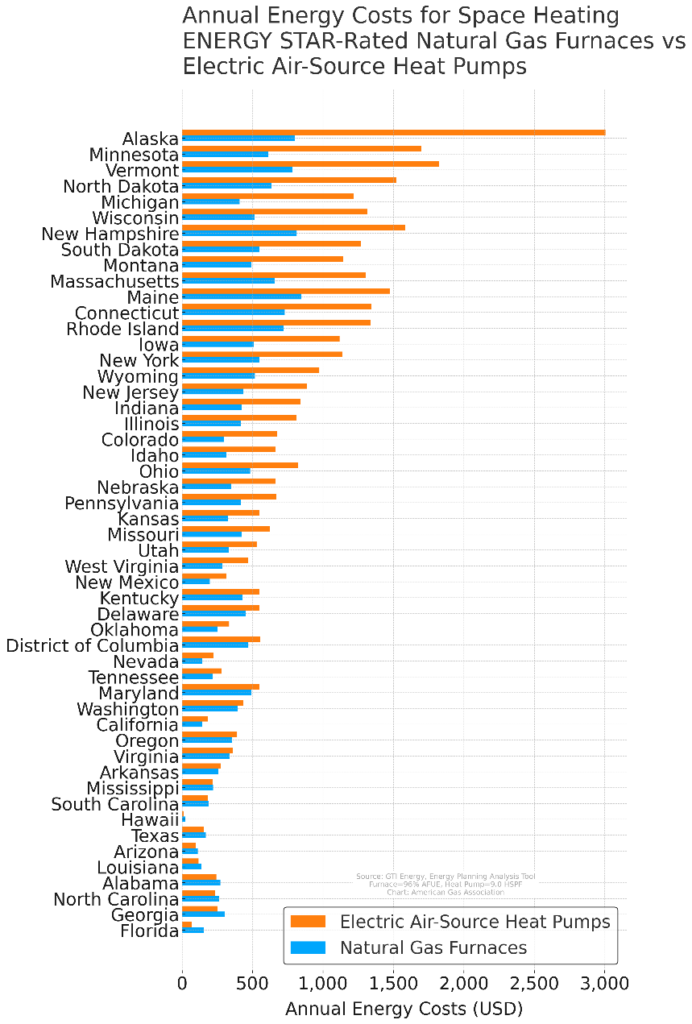Natural Gas or a Heat Pump? Where You Live Matters

Maybe you’re building a home and deciding how to heat it. Alternatively, maybe you already have natural gas or electric heating, and are deciding what to replace it with when the time comes. How you heat your home is a personal choice. However, where you live says a lot about what type of heating is going to be most affordable in the long term. There are two main factors to consider: annual heating costs, and the upfront cost.
New analysis by AGA using GTI Energy’s Energy Planning Analysis Tool and state-by-state data from the Energy Information Administration (EIA) breaks down the average costs of high and low efficiency natural gas, and high and low efficiency electric heat pumps. The graph below shows that natural gas is more affordable in 41 out of 50 states when comparing ENERGY STAR natural gas furnaces to ENERGY STAR electric heat pumps. As a rule of thumb, the higher the average annual heating bill, the greater the savings from natural gas.

The picture is nearly identical when comparing the lowest efficiency natural gas furnaces against the highest efficiency electric heat pumps available. The least efficient natural gas furnace is cheaper to heat with than the most efficient electric heat pump in 36 states. How is that possible? The answer is largely a question of how each technology works.
Electric heat pumps work by moving heat around. They are most efficient in a temperature range that is not too hot and not too cold: in other words, if it’s 70 degrees outside, electric heat pumps are absolutely fantastic for ensuring your house is 70 degrees, and they do so very efficiently. The colder (or hotter) it is, the harder it has to work to make that happen, and the more electricity it takes. This may result in less heat than you’d like at an unexpectedly high cost. Natural gas appliances by contrast create their own heat, and are not dependent on outside heat to function properly. Refer to the table below to see where your state falls in terms of heating affordability for each type of appliance!

The ongoing cost, of course, is only half the picture. How much will each system cost upfront? New heat pumps typically cost between $2,500 and $10,000 to install dependent on the square footage, while natural gas furnaces typically cost between $700 and $3,300. If your house currently uses natural gas you may also need to pay to have it rewired for additional electrical capacity, a process which typically costs between $2 and $4 per square foot of your house. Finally, your local utility may have rebate programs for high-efficiency appliances that mean that the most affordable appliance upfront is also the one that will save you the most money in the long term.
The affordability of natural gas saves the average American household that uses natural gas $1,132 per year compared to their all-electric counterpart. As an added bonus, a natural gas ENERGY STAR household can have a carbon footprint 19% lower than an ENERGY STAR heat pump household, and 64% lower than a home that heats with an electrical resistance furnace. If you choose to heat with natural gas, you can feel good about your choice from both a financial and an environmental perspective!